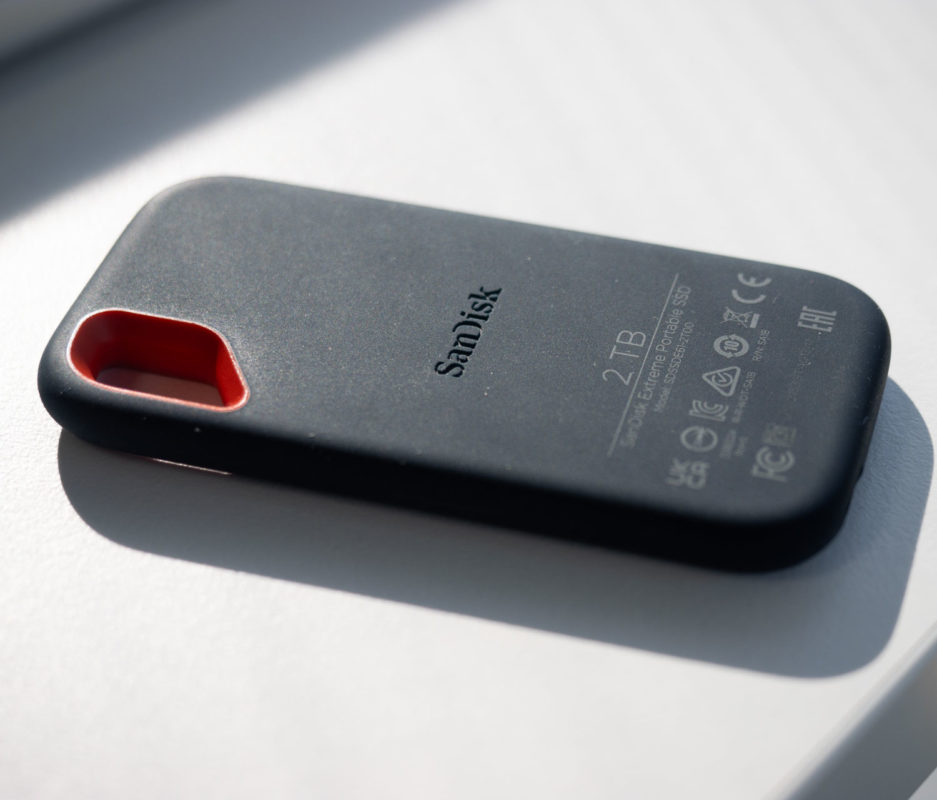If you have a SanDisk Extreme or Extreme Pro SSD, it’s time to get out a magnifying device, because you’ll want to put its tiny, faint serial number into a form to see if you need a firmware update. Over the last few months, there have been reports of failures, mostly with the newer 4TB models, but also with some 2TB models. Extreme and Extreme Pro models have both been affected, and not all failures have been recoverable.
You’ll need to check on the back of your SSD, right at the bottom, between the two logos. The rubber cover does attract dust, so lightly wet a finger and wipe it clean, then take a photo with the closest-focusing lens you have handy — an iPhone’s 0.5x lens will do. Then, head to this form and enter the serial number you’ll barely be able to read. At time of writing, this site is unreachable, possibly due to heavy traffic, but it was working for me this morning.
If you’re lucky like me, your device will need no updates. I’ve been happily using my 2TB Extreme for over a year without any issues; it’s been fast and reliable. That’s sadly not everyone’s experience, though. At best, the company seems to have had a bad batch or two of devices; at best, the situation is a little worse. Either way, communication hasn’t been as good as it should have been. For a whole lot more detail on failures that some people have experienced, read this article from Ars Technica. For some people at least, the firmware update is not enough; they’ve already lost data, and they haven’t had the support they’ve been looking for.
In the meantime, if you’re looking for a 4TB SSD that’s reasonably priced and pre-built (as opposed to one you assemble yourself) then I can confirm that the Samsung T7 Shield (4TB) does work pretty well. Speeds aren’t as good as the SanDisk Extreme 2TB, but the price-per-gigabyte ratio is good, it doesn’t slow down to a crawl when you write a large amount of footage in one hit, and there are no widespread failure reports.
If you ever hear a single story of device failure from a colleague, always remember that the plural of anecdote is not data. My own personal experience (which has been fine across SD cards and an SSD) is worth little on its own, and you have to look at the bigger, aggregated picture. With that in mind, there are now enough reports of SSD problems that some caution is probably wise, so make sure your backups are current, in case the worst happens. Of course, you should always make sure you have backups of any data, never just one copy on a single SSD, because failures will always happen. One extra note, though: it’s also wise to make sure your backups aren’t on the same kind of drive as the first, and certainly not from the same batch. You never know.

